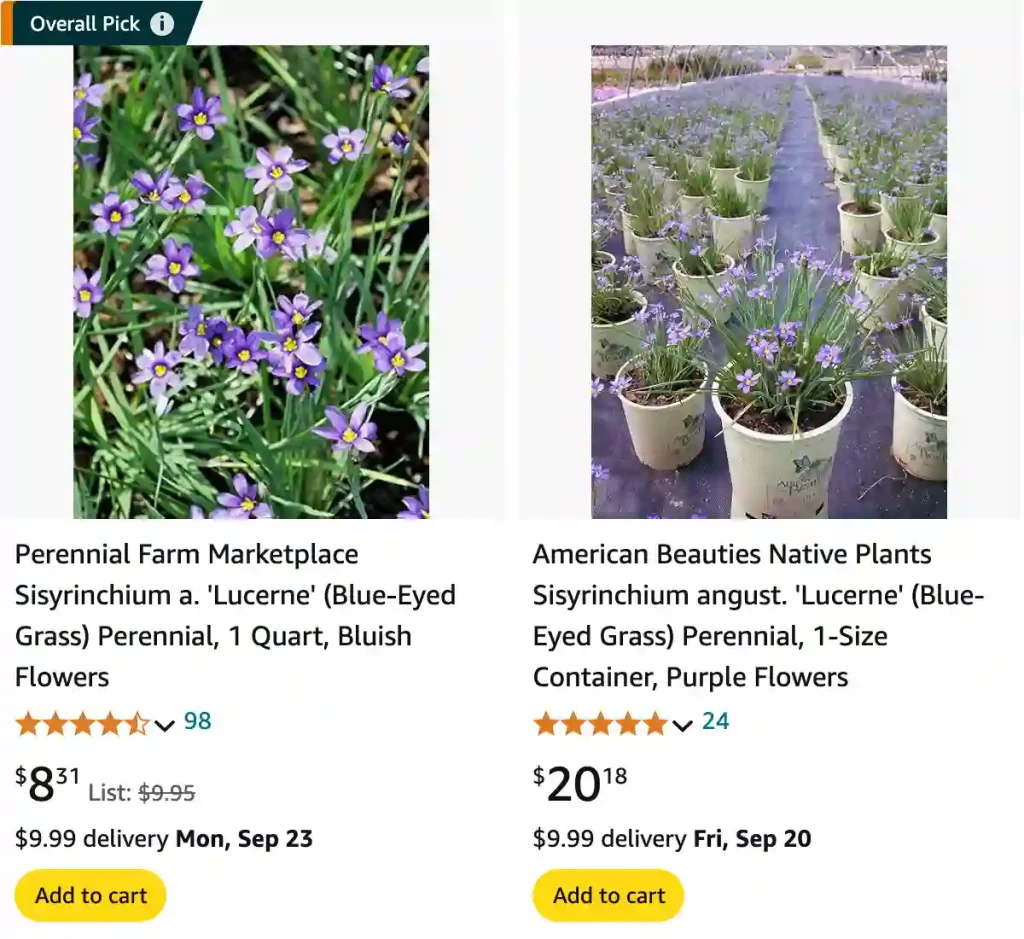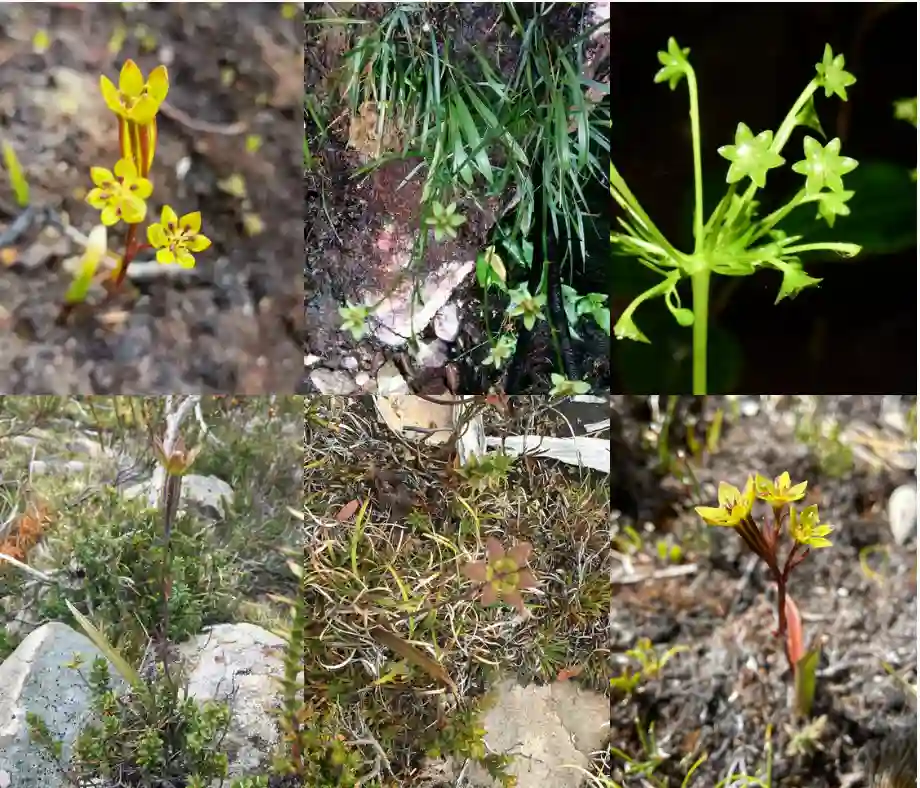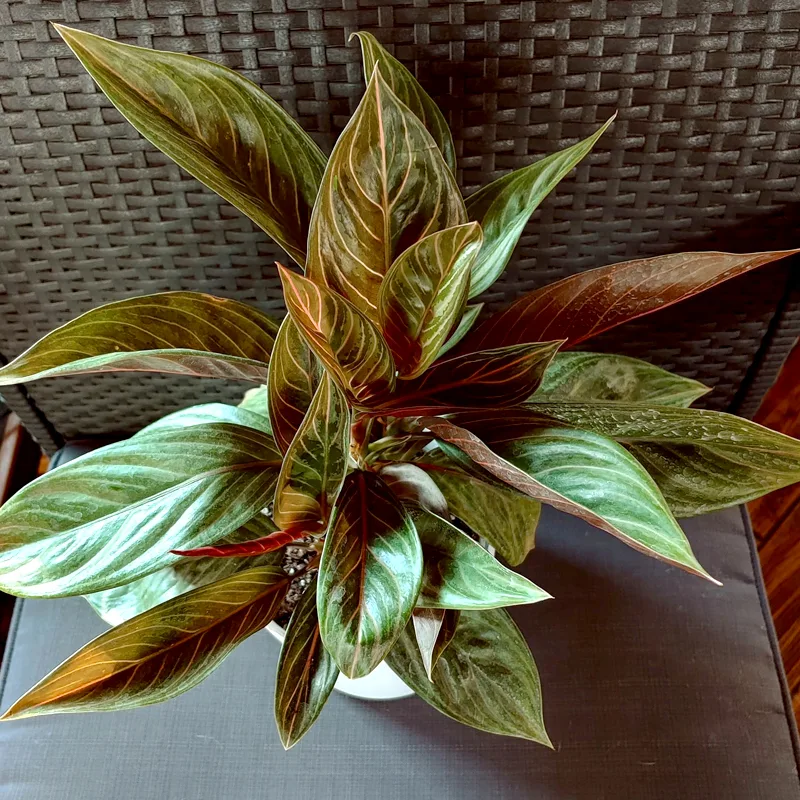
FAQs About Lucerne Blue Eyed Grass
Lucerne Blue Eyed Grass, scientifically known as Sisyrinchium Angustifolium, is a charming perennial that has piqued my interest with its delicate blue flowers and easy care. Whether you’re thinking about adding it to your garden or just curious about its characteristics, here are some frequently asked questions I’ve come across about this lovely plant.
212 Species in Genus Sisyrinchium
What Is Lucerne Blue Eyed Grass?
Lucerne Blue Eyed Grass is a perennial plant native to North America, particularly known for its striking blue flowers that bloom in late spring to early summer. Despite its name, it’s not a true grass but rather belongs to the iris family. Its grass-like foliage and small, star-shaped flowers make it a beautiful addition to any garden.
How to Grow Lucerne Blue Eyed Grass?
Growing Lucerne Blue Eyed Grass is relatively straightforward. Here’s a quick guide to get you started:
- Soil Requirements: It thrives in well-drained soil with a pH between 6.0 and 7.0. While it’s not overly picky, ensuring good drainage is key to preventing root rot.
- Light Conditions: This plant prefers full sun to partial shade. In areas with intense heat, a bit of afternoon shade can help it flourish.
- Watering: Regular watering is essential, especially during dry spells. However, be cautious of overwatering as it can lead to root issues.
- Spacing: Space the plants about 8 to 12 inches apart to allow for their spreading nature.
- Fertilization: A balanced, all-purpose fertilizer applied in early spring will support robust growth and blooming.
How to Care for Lucerne Blue Eyed Grass?
Caring for Lucerne Blue Eyed Grass is relatively easy:
- Pruning: Deadheading spent blooms will encourage more flowering and keep the plant looking tidy.
- Dividing: Every few years, divide the clumps to prevent overcrowding and rejuvenate the plant. This also helps maintain healthy growth and blooms.
- Winter Care: In colder regions, a layer of mulch around the base can protect the roots from freezing temperatures.
Is Lucerne Blue Eyed Grass Deer Resistant?
Yes, Lucerne Blue Eyed Grass is generally considered deer resistant. Its grass-like foliage and tough nature make it less appealing to deer, which are more likely to graze on other, softer plants. However, deer will eat almost anything if food is scarce, so it’s not entirely foolproof.
Is Lucerne Blue Eyed Grass Invasive?
No, Lucerne Blue Eyed Grass is not considered invasive. It spreads slowly and doesn’t aggressively take over garden spaces. It’s a well-behaved plant that adds beauty without overwhelming other garden plants.
Can You Grow Lucerne Blue Eyed Grass Indoors?
While it’s not commonly grown indoors, you can attempt to grow Lucerne Blue Eyed Grass in a container indoors. Provide it with a bright, sunny spot and ensure it gets plenty of light. However, it’s generally more suited to outdoor environments where it can benefit from natural conditions.
Is Lucerne Blue Eyed Grass Toxic?
Lucerne Blue Eyed Grass is non-toxic. It’s safe to grow around pets and children, which is always a plus for a garden plant. Unlike some other garden plants, you won’t need to worry about toxicity with this one.
What to Plant With Lucerne Blue Eyed Grass?
Lucerne Blue Eyed Grass pairs well with various garden plants. Consider planting it alongside:
- Low-growing perennials like Creeping Jenny or Sedum, which can complement its foliage.
- Other grasses such as Fountain Grass or Blue Fescue for a varied texture.
- Colorful flowers like Daylilies or Black-eyed Susans to create a vibrant garden display.
Benefits of Lucerne Blue Eyed Grass
This plant offers several benefits:
- Attractive Blooms: Its blue flowers provide a striking contrast in the garden, making it a visual standout.
- Low Maintenance: It requires minimal care, making it ideal for busy gardeners.
- Versatility: Suitable for various garden styles, from cottage gardens to more modern landscapes.
Common Problems with Lucerne Blue Eyed Grass
While generally trouble-free, Lucerne Blue Eyed Grass can face a few issues:
- Root Rot: Ensure well-drained soil to avoid this common problem.
- Pest Issues: Though rare, watch for aphids or spider mites, which can occasionally affect the plant.
How Does Lucerne Blue Eyed Grass Compare to Other Similar Plants?
Lucerne Blue Eyed Grass is often compared to other blue-flowering plants like the Blue Star Creeper or Sisyrinchium striatum. Unlike these, Lucerne Blue Eyed Grass has a more upright growth habit and tends to be slightly less aggressive in spreading. It’s also generally more deer-resistant compared to some other species.
In conclusion, Lucerne Blue Eyed Grass is a delightful addition to any garden with its beautiful blooms and easy care. Whether you’re dealing with deer, curious about its invasiveness, or considering its indoor potential, this plant proves to be a versatile and beneficial choice.
If i die, water my plants!



